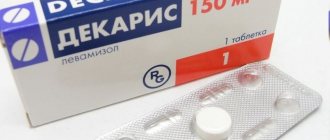Toxic effect of paracetamol in cats Symptoms of poisoning Diagnosis Therapy Preventive measures
Paracetamol (or acetaminophen) is a drug that has a strong analgesic and antipyretic effect. It is one of the most popular medications used for pain syndrome (arthralgia, myalgia, headache, toothache) or for feverish conditions due to infection. The drug is well tolerated by patients, has a wide range of therapeutic doses, therefore, if the patient takes it at the dose indicated in the instructions, the risk of side effects is minimal.
However, cats are very sensitive to this drug. The toxic effect of paracetamol can occur even if the cat takes it in a dose of less than 10 mg per 1 kg of weight. In addition, we should not forget that an animal can get into the medicine cabinet and eat a large number of tablets, or drink a suspension from a bottle, thereby exceeding the toxic dose many times over.
basic information
· Paracetamol is one of the most used drugs in many countries around the world.
This medicine is often used for deliberate poisoning for the purpose of suicide. For example, in Britain the overdose death rate is 0.4%. This is 150-200 cases per year. · Paracetamol poisoning occurs when you overdose on acetaminophen, which is part of a number of medications. It occurs frequently, but is rarely critical, and in its pure form is not fatal.
· Ingestion of >6 g by adults is considered a single toxic dose and may pose a risk of serious liver damage.
· People susceptible to intoxication, such as alcoholics or patients receiving enzyme-inducing drugs (eg, antiepileptic drugs), have a low toxicity limit.
· In children, doses > 125 mg/kg cause poisoning and liver damage.
· Toxicity may be underestimated because pure paracetamol poisoning produces few symptoms until 10–20 hours after ingestion.
· The antidote effect for this type of poisoning is so small that diagnosis for treatment should be carried out as early as possible based on the history and possible determination of the concentration.
· Patients with long-term use of acetaminophen have a narrow therapeutic window.
Prevention
Of course, the main preventative measure is to prevent your cat from accessing your first aid kit. A cat is a naturally curious animal, and it tries to explore its territory as much as possible. Therefore, your first aid kit should be in a place that is as inaccessible to your cat as possible.
If your cat needs pain medication, never use human medicine. Today, there is a large selection of veterinary pain medications for cats that are both highly effective and well tolerated.
Etiology and pathogenesis
At therapeutic doses, more than 90% of paracetamol will be detoxified by conjugation and degradation to non-toxic metabolites. In case of overdose, toxic metabolites accumulate, which destroy cell membranes and lead to cell death in the liver.
Damage to this organ causes jaundice, coagulopathy, hypoglycemia, edema, and renal failure. DIC and death often occur within a few days.
Pharmacokinetics
· Paracetamol is rapidly absorbed, the maximum concentration is reached after 30-60 minutes and absorption is complete after 4 hours.
· T½ for paracetamol in therapeutic doses ranges from 1.5 to 3 hours, but in case of overdose it increases to 4 hours or more.
· The two main pathways of paracetamol degradation are conjugation with sulfate or glucuronate and renal or biliary secretion of the conjugates. A minor portion is converted via cytochrome P-450 to the reactive metabolite NAPQI (N-acetyl-β-benzoquinoneimine), which is toxic to cells when it binds to intracellular proteins in the liver. NAPQI is converted into harmless compounds by conjugation with glutathione (GSH)
· When the liver's GSH stores are used up 24 hours after a toxic dose of paracetamol, the organ's cells are damaged. By adding N-acetylcysteine, which is a precursor to glutathione, the already formed NAPQI is detoxified and new formation is limited.
Predisposing factors
A number of conditions lead to more severe poisoning and serious complications. These include:
· Enzyme induction.
· Chronic alcoholism.
· Use of enzyme-inducing drugs such as phenytoin and phenobarbital.
· Increased concentrations of toxic metabolites, for example, with chronic use of paracetam, malnutrition, eating disorders.
Paracetamol poisoning does not cause impairment of consciousness in a phase where specific treatment can prevent organ damage.
Can I give it to a cat?
Medical studies have shown that in cats, even a minimal dose of Paracetamol can cause toxic symptoms, and for some it is even fatal. Therefore, the use of fever medication for cats is strictly contraindicated. Even 100 mg of the drug can poison a purr, because they have a limited ability to bind by glucuronic type, which cannot be said about most animal species in which paracetamol binds to glucuronic acid in the largest digestive gland and is excreted through the kidneys.
Giving “Paracetamol” to a kitten or older cat with a fever is extremely dangerous and, apart from poisoning the pet, you should not expect any other outcome from this medication.
Diagnostic criteria
History taking
A preliminary diagnosis is established based on a patient interview and medical history. If you suspect an overdose of paracetamol, the victim should ask the following questions:
- How many tablets were taken?
- What type of preparation?
- Were you using entero tablets or slow-acting drugs (delays release)?
- When did the reception take place? Was the drug taken all at once or in parts?
- Has the patient taken alcohol, drugs, or other paracetamol tablets?
- Did the patient vomit? Is there an attempt to vomit?
- Have you used activated carbon yourself?
Clinical data and symptoms
Paracetamol poisoning manifests itself in the form of characteristic symptoms.
1. Acute poisoning. The first few hours there are no clinical signs, no sedation. Decreased consciousness shortly after eating suggests mixed poisoning (alcohol, sleeping pills, codeine). Symptoms gradually begin to appear:
· Firstly, nausea and pain on palpation in the right hypochondrium.
· Later jaundice and decreased consciousness (hepatic coma).
· Kidney failure may develop.
2. Chronic poisoning. Occurs most often in chronic alcoholics or people with long-term use of paracetamol in the upper therapeutic range.
Manifests itself in the form of symptoms such as:
· Dehydration.
· Jaundice.
· Elevated levels of transaminases.
· Coagulopathy and hypoglycemia.
· 50% of these patients also develop acute tubular necrosis.
Blood gas and pH levels confirm the diagnosis and differentiate between mild and severe poisoning. For mixed poisoning or unknown agent, you should also check:
1. Salicylates and alcohols.
2. Other drugs or toxins.
3. Liver function tests. ALT increases approximately 12 hours after ingestion and peaks at 72 to 96 hours. Organ damage is defined as ALT > 1000 U/L.
4. Bilirubin, albumin and INR change within 24 hours after administration.
5. Kidney function tests: creatinine, urea, sodium, potassium, phosphate.
If paracetamol poisoning is suspected and characteristic symptoms appear, the patient should be hospitalized in a medical facility.
Harmless paracetamol is deadly.
Paracetamol is one of the most common analgesics and antipyretics in the world, having anti-inflammatory, antipyretic and analgesic effects. It is included both in the WHO list of the most important modern medicines and in the main list of medicines necessary for medicine in the Russian Federation. However, the availability and low cost of paracetamol often provokes an overdose of this medicine in all categories of the population.
Many people treat colds on their own, without consulting a doctor and thereby not observing the dosage and combination of antipyretic and cold medications. In addition, people are poorly versed in the purpose of medications, very often taking complex medications along with medications to lower their temperature. However, they do not know that paracetamol has a very low safety bar.
December 28 at the RKB named after. ON THE. Semashko by air ambulance, due to deteriorating condition, a patient was transported from the central regional hospital, who, unfortunately, could not be saved.
“We were very worried about this patient, since she is a very young woman, only 24 years old. We offer our deepest condolences to the family, friends and children who lost their mother.
You need to take care of yourself.
One of my friends came from Italy and fell ill during the trip. As usual, I went into an Italian pharmacy and noticed that it didn’t look like a pharmacy at all. In our understanding, these are many shelves with medicines, powders, tablets, injectables; instead, at the exhibition there were various creams, personal hygiene products and everything like that. Where are the medicines? To which he was told that they had all the medications and the only thing needed was a card with the names of the medications that the doctor prescribed. And he also noticed that there are practically no medicines in television advertising, while in Russia, every second advertisement is medicine “from head to toe”, which says that when taking this or that medicine, beautiful people are beautiful recover, unfortunately this is not always the case. Moreover, the drug load can have a negative impact on the patient.
In our patient, several damaging factors came together - a weight loss diet that disrupted the functioning of the liver enzyme system, a previous infection with viral hepatitis B, the fact of which was confirmed using laboratory tests, and, in addition to everything, the drug Paracetamol, which is available in European countries and is a leading drug worldwide that attacks the liver and causes severe necrosis that often requires organ transplantation.
When this patient was admitted, she was given a set of antidote therapy measures, i.e. we administered drugs that neutralize the remnants of toxic substances, detoxification was carried out using an extracorporeal method to remove poisons and toxic compounds from the blood, unfortunately, even such intensive therapy did not allow us to stabilize her body, moreover, since we understood that a lot needs to be used We checked our possibilities and treatment with colleagues from the Federal State Budgetary Institution “National Medical Research Center for Transplantation and Artificial Organs named after. ak. IN AND. Shumakov,” leading specialists in liver transplantation provided significant assistance; we checked hours, appointments, diagnostic and therapeutic measures with them, but unfortunately the patient could not be saved.
For the residents of our republic, I would like to say that any medicine is poison - the only question is the dose. Therefore, you need to be more careful and balanced when taking medications, and, if possible, believe less in advertising and trust doctors more. Maybe I was lucky, but I have not met a single doctor who would wish harm on his patients. I think that they won’t recommend a bad doctor and it will be better if you took care of your health together with a doctor you trust! Be healthy and take care of yourself." – commented the head of ICU No. 1 Filippov Vladimir Aleksandrovich
Head of the Gastroenterology Department Tsyrempilova Aryuna Chimitdorzhiena:
“The liver is the main laboratory of our body; it performs a neutralizing, detoxifying function, i.e. cleanses the body: everything passes through it: alcohol, poor quality food, toxins contained in it, polluted surrounding air and even bad mood. It has been proven that if at least 30% of liver cells are preserved and not damaged by toxins, then our “hard worker” liver will perform all its main functions (there will be normal biochemical parameters in the blood). This is a “grateful” organ, if you follow proper nutrition, eliminate all bad habits, take hepotoxic drugs, uncontrolled use of antibacterial, non-steroidal drugs, maintain a healthy lifestyle, the liver will and will try to function normally.
On a note
Taking 100 grams of cottage cheese has a protective, hepatoprotective effect, because cottage cheese contains protein, incl. essential amino acid – methionine
You need to lose weight gradually - you need to lose no more than 300 grams per week. In our case, the patient lost 10 kg in a month, which became one of the detrimental factors that affected her body. The second factor was infection with the hepatitis B virus. Given the already damaged liver, she started taking paracetamol - 2 tablets 3 times a day together with acetylsalicylic acid. Although, even 1.5 tablets of paracetamol for the liver is considered a toxic dose. As a result, the liver could not cope with the load. Despite intensive treatment, the patient fell into a coma, after which, unfortunately, she died.
Taking medications must be taken very responsibly. Take medications only as prescribed by your doctor and follow the dosage of the medications.
Unfortunately, you very often hear in pharmacies when specialists, pharmacists standing on the other side of the counter categorically and authoritatively recommend treatment for: runny nose, allergies, diarrhea, fever, and the buyer - the patient trustingly purchases: paracetamol, nise, citramon, aspirin and many other drugs.
I would like to say TAKE CARE OF YOURSELF, APPRECIATE YOUR HEALTH, BECAUSE HEALTH IS IN YOUR HANDS!!!.”
Alexandra Mikhailovna Danchinova, chief freelance clinical pharmacologist of the Ministry of Health of the Republic of Belarus: “Self-medication is dangerous!”
“First of all, we must think about the dangers of self-medication. All drugs that are approved for over-the-counter use and advertised in the media seem to be absolutely safe. In fact, no drug is safe. This also applies to such common drugs as paracetamol and acetylsalicylic acid (aspirin). These drugs belong to the group of potentially toxic substances; if the dose is exceeded, toxic properties appear. The maximum daily dose of paracetamol allowed in our country is 4 grams or 8 tablets. The patient took paracetamol 3 g - 6 tablets for 3 days simultaneously with 2 aspirin tablets and other drugs. This resulted in fatal liver damage. I strongly recommend against self-medication."
Experts urge respected residents of the Republic of Buryatia to seek medical help from doctors, carefully read instructions on the medical use of medications, take medications in recommended doses, and use medications with caution to relieve cold symptoms.
Treatment
Primary goals of treatment: reduce liver toxicity, prevent liver failure, treat complications (symptomatic treatment).
Emergency help
If a person suspects paracetamol poisoning, first aid should be provided as soon as possible:
- Clear the airways and provide oxygen.
- Induce vomiting if less than 1 hour has passed since taking the drug.
- Use activated carbon or any other sorbent.
Next, the patient must be hospitalized to receive medical care.
Treatment regimen
· Activated charcoal if <4 hours have passed since the toxic dose. It can be given much later if delayed-release medications have been taken.
· The antidote N-acetylcysteine is administered intravenously if poisoning is suspected. If <10 hours have passed since dosing, there is a high likelihood of complete protection from liver damage. If >15 hours have passed since dosing, the effect is questionable, but use is still recommended because the timing may be uncertain and the drug also affects liver failure.
· Antidote treatment is prescribed at a toxic dose > 150 mg/kg. Standard treatment lasts more than 20 hours, divided into 2 modes (one for 4 hours and one for 16 hours).
· First, a bolus dose of N-acetylcysteine 200 mg/kg is administered intravenously over 4 hours, then 100 mg/kg intravenously over 16 hours. Last part of treatment (100 mg/kg for 16 hours). Therapy is repeated if a blood sample taken 16 hours after the start of treatment shows signs of hepatocellular injury (ALT > 70 U/L) or β-paracetamol > 0.150 mmol/L.
Blood samples are taken every 8 hours. Treatment can be stopped when ALT <70 U/L and reaches P-paracetamol <0.150 mmol/L and when 3 consecutive PP/INR values (6 hours apart) increase or decrease accordingly.
Composition and action
According to the official instructions, Paracetamol is an analgesic, antipyretic drug that does not have an anti-inflammatory effect, since it does not affect the production of prostaglandins in the body tissues and at the same time, the medicine does not change the water-salt balance and does not have a negative effect on the gastrointestinal mucosa. The drug quickly relieves toothache, joint pain and headaches, thanks to the active ingredient in its composition - paracetamol. And also the activity of Paracetamol extends to neuralgia, hyperthermia caused by vaccination, and a febrile state accompanying infectious pathologies.
Antidote for paracetamol poisoning
Before using the antidote, you need to cleanse the stomach and apply sorbents. The antidote for paracetamol poisoning is N-acetylcysteine.
Dosage
It is used when a toxic dose of the drug > 150 mg/kg or > 10 g is suspected.
If treatment is started 10-12 hours after taking the tablet, there is a risk of liver damage.
Side effects of N-acetylcysteine
The most common and transient side effects are:
- Skin rash.
- Itching.
- Asthma attacks.
Negative symptoms are counteracted by stopping treatment and administering antihistamines and steroids. Treatment with N-acetylcysteine can then be resumed (at a lower infusion rate).
Initial use is most effective within the first 10 hours. Treatment with N-acetylcysteine is also indicated in the later stages of paracetamol poisoning. In addition to storing glutathione, N-acetylcysteine also has a positive effect on liver perfusion and oxygen uptake.
How does it affect the cat's body?
The drug negatively affects the ability of red blood cells to carry oxygen.
If you give a cat Paracetamol tablets, its active component will provoke the following undesirable phenomena in the animal’s body:
- The ability of red blood cells to carry oxygen will decrease. As a result, oxygen starvation of the animal’s body will occur.
- The load on the myocardium will increase. As a result, the risk of developing cardiomyopathy increases significantly.
- Poisoning of the liver and kidneys will occur. Against the background of organ intoxication, irreversible processes of damage to liver tissue will occur, and kidney function will also be seriously impaired.
Progress, complications and prognosis
To prevent subsequent accidents, the patient should be explained that medications, including over-the-counter medications, should be kept out of the reach of small children and that the recommended daily dose should not be exceeded.
Gradient
There are usually fewer or no symptoms for the first 24 hours before liver damage develops.
The following is possible:
· Up to 24 hours: nausea, vomiting, feeling of weakness, pallor and sweating (mainly in children and in severe poisoning).
· From 24 to 48 hours; possible: pain in the upper abdomen, tenderness on palpation over the liver, lethargy. Increased liver enzymes and oliguria.
· 72 to 96 hours: Liver enzymes reach maximum levels, bilirubin levels rise (jaundice), and INR increases. Gradual development of liver failure.
· 4 to 7 days: In fatal stages, liver coma develops with hypoglycemia, jaundice, coagulopathy, edema and renal failure.
· DIC and death from 4-5 days. In those who survive, liver damage lasts 5-9 days, with complete remission over the next 2-3 weeks.
Complications
Against the background of paracetamol poisoning, complications such as:
· Liver necrosis.
· The heart may also be affected.
· Acute renal failure.
Forecast
The dose taken indicates the risk of hepatotoxicity. Ingestion of >10 g poses a risk of liver damage. Prognosis in case of overdose without special treatment:
· 8% severe liver damage.
· 4% fatal liver damage.
· 1% acute renal failure.
People who abuse alcohol, use drugs, enzymes, or have eating disorders have an increased risk of liver damage. N-acetylcysteine completely counteracts poisoning if given within 8-10 hours of taking paracetamol, and improves prognosis if given after 8-10 hours.
Patients who survive the acute phase are at risk of permanent liver damage.
Symptoms of poisoning
It is important to know exactly what acetaminophen poisoning looks like in cats. If similar symptoms appear, you should immediately contact a veterinary clinic:
- hard breath;
- gray-brown color of mucous membranes;
- swelling of the face, neck, or limbs;
- a sharp decrease in body temperature;
- vomit;
- jaundice (yellow discoloration of the skin and whites of the eyes) due to severe damage to the liver tissue;
- depression, lethargy, coma.











